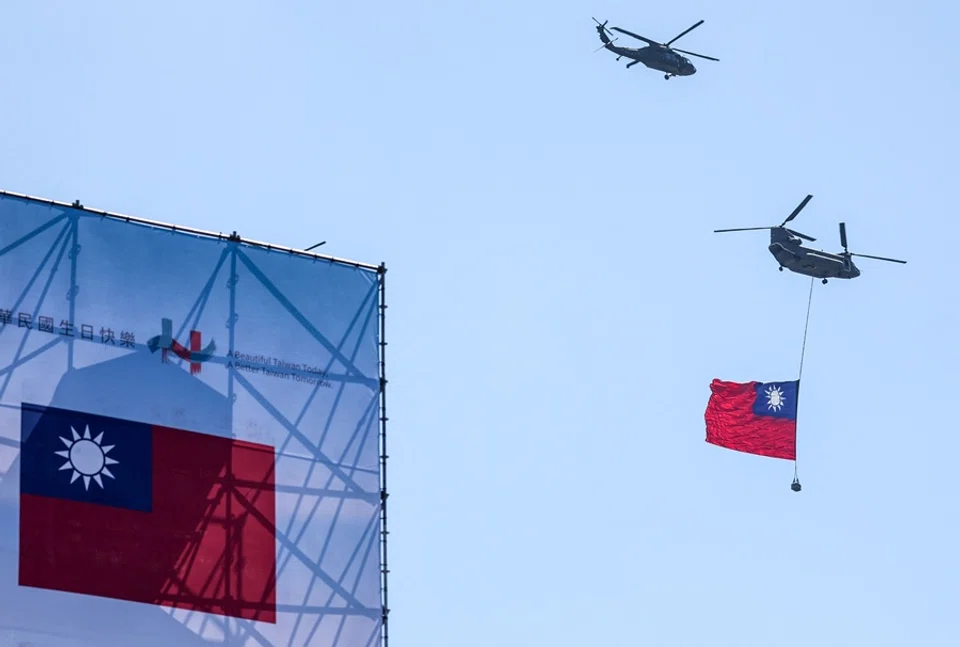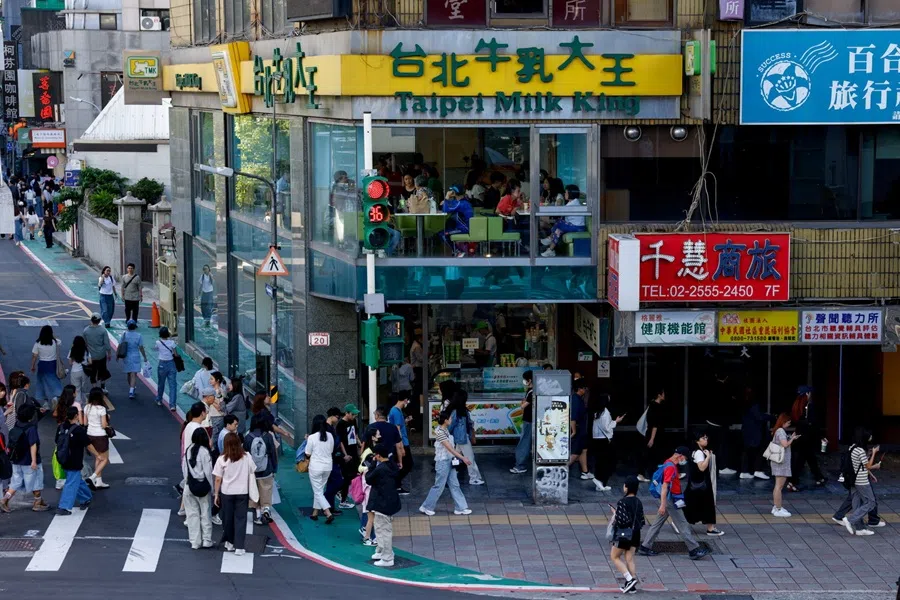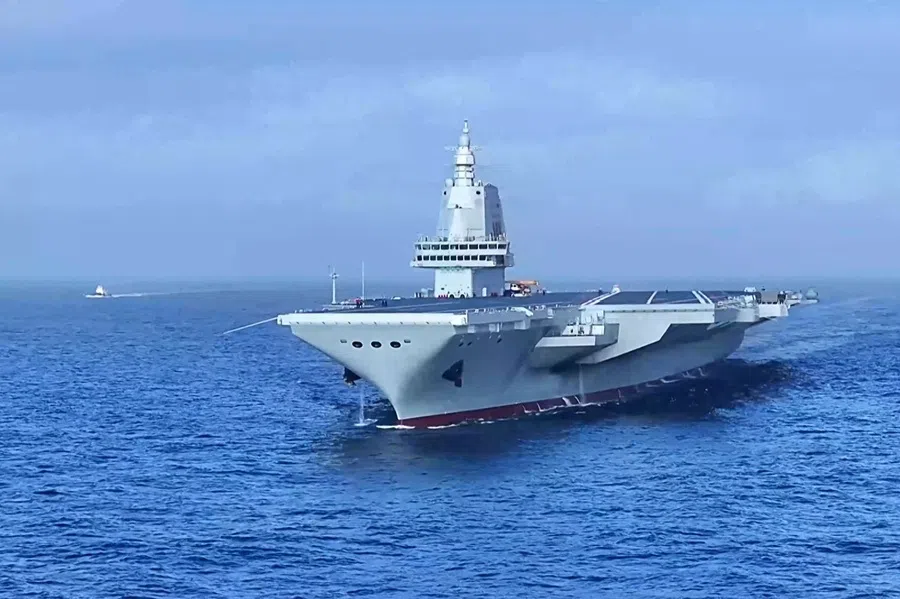Whose victory, whose history? The fight over Taiwan’s 1945 ‘retrocession’
For Beijing, Taiwan’s “retrocession” marks the triumph of China’s wartime struggle and the promise of reunification. For Taipei’s Democratic Progressive Party, it recalls the arrival of yet another foreign regime — not national recovery. Taiwanese academic Wen-Hsuan Tsai examines the issue.

The Standing Committee of China’s 14th National People’s Congress has resolved to designate 25 October as the Commemoration Day of Taiwan’s Restoration, launching a series of commemorative activities.
In a speech delivered at the ceremony marking the day, Wang Huning, chairman of the National Committee of the Chinese People’s Political Consultative Conference, said that the Commemoration Day of Taiwan’s Restoration demonstrates that “all ethnic groups in China” were resolved to safeguard China’s national sovereignty and territorial integrity and to strengthen the international consensus that “there is only one China in the world, and Taiwan is an inseparable part of China”.
Wang added that by simultaneously celebrating China’s victory over Japanese aggression, China and Taiwan could build a sense of community for the Chinese nation, deepen exchanges between the two sides of the Taiwan Strait, and contribute to the cause of national rejuvenation.
The different meanings of ‘retrocession’
In contrast to mainland China, the term “retrocession” is politically sensitive in Taiwan. In 1946, after Chiang Kai-shek had retreated to Taiwan, the anniversary of Taiwan’s retrocession (the end of Japanese colonial rule over Taiwan) was declared a national holiday. This was done to inspire gratitude among the Taiwanese towards the Kuomintang (KMT, Nationalist Party) and deepen their hatred of Japanese colonial rule.
The focus of the celebrations surrounding the new Retrocession Day is the Nationalists’ achievement in fighting off the PLA at Guningtou, which has become a symbol of “resisting China and protecting Taiwan”.

Retrocession Day remained a national holiday until the Democratic Progressive Party (DPP) came to power in 2000. Its removal from the calendar then represented a rejection of the narrative that it was the KMT that had liberated Taiwan from the Japanese. This year, however, President Lai Ching-te of the DPP reinstated the national holiday, albeit with a new name: Taiwan Retrocession Day and the Anniversary of the Battle of Guningtou.
Guningtou, located in the northwest of Kinmen Island, was where KMT forces fought off an attempted invasion by the People’s Liberation Army (PLA) on 25 to 27 October 1949. After three days of fierce fighting, the KMT troops achieved a major victory. Realising the limitations of its amphibious warfare capabilities and that the KMT was still capable of organised resistance, the Communists halted their attack on Taiwan.
This was the beginning of the division of Taiwan and mainland China, which continues to this day. The focus of the celebrations surrounding the new Retrocession Day is the Nationalists’ achievement in fighting off the PLA at Guningtou, which has become a symbol of “resisting China and protecting Taiwan”. To place too much emphasis on celebrating the end of Japanese colonial rule might have a detrimental effect on Taiwan’s relations with Japan, which the DPP government is eager to develop.
Downplaying the connection between Taiwan and mainland China
So the current government has merged the commemoration of the Battle of Guningtou with the anniversary of the end of Japanese rule, thereby weakening the legitimacy of China’s “reunification” drive. Advocates of the theory that “Taiwan’s international status is undetermined” argue that after Japan’s defeat in 1945, it relinquished control over Taiwan and Penghu without specifying which Chinese regime would inherit these territories.
In other words, both the KMT and the Chinese Communist Party (CCP) were foreign regimes and using the term “recovery” to describe what happened in 1945 is inappropriate.

Furthermore, the DPP pointed out on its Facebook page on 25 October that UN Resolution 2758 of 1971 only allowed for the People’s Republic of China to replace the Republic of China in the UN; it made no mention of sovereignty over Taiwan. Based on these arguments, some scholars and the Taiwanese public reject the idea that Taiwan was ever “recovered”.
It was not “recovered” by the KMT government in 1945, nor was it “recovered” by the People’s Republic of China in 1971. In other words, both the KMT and the Chinese Communist Party (CCP) were foreign regimes and using the term “recovery” to describe what happened in 1945 is inappropriate.
By designating 25 October as the “the Commemoration Day of Taiwan’s Restoration”, the CCP is claiming credit for the defeat of Japan and heralding Taiwan’s eventual return to the “motherland”. But there is no denying the KMT’s eight-year-long leadership of the armed resistance against Japan. However, at a time when the DPP is downplaying the connection between Taiwan and mainland China, the party avoids mention of the war against Japan — and even more so, refrains from criticising the CCP’s erroneous interpretation of that war.
Indeed, although the Taiwanese armed forces have taken part in events to mark Retrocession Day 2025, they seem to have ignored the war against Japan. This is a symptom of the dilemma facing the DPP...
The DPP’s dilemma
Indeed, although the Taiwanese armed forces have taken part in events to mark Retrocession Day 2025, they seem to have ignored the war against Japan. This is a symptom of the dilemma facing the DPP: if, in an effort to sever Taiwan’s ties with China, it ignores the struggle against Japanese aggression in the 1930s and 1940s, is it not refusing to acknowledge the role of the KMT government in that struggle, and even denying the very existence of the Republic of China? Yet, acceptance of Beijing’s narrative regarding retrocession would be tantamount to affirming the historical ties between Taiwan and China, which could disrupt cooperation with Japan.

For both Taiwan and China, the term “retrocession” carries a host of different meanings connected with the interpretation of history and political legitimacy. For Beijing, “Taiwan Retrocession Commemoration Day” is being used to enhance ties across the Taiwan Strait, but this may be awkward for both the opposition KMT in Taiwan and the CCP. While the KMT supports the term “Taiwan Retrocession”, it rejects the CCP’s narrative concerning leadership of the war against Japan.
The DPP faces an even greater dilemma, as its pro-independence stance is totally incompatible with the idea of retrocession. However, given that the current DPP government still uses the political identity of the Republic of China, all it can do is blur the concept of retrocession as much as possible — for example, by combining it with the commemoration of the Battle of Guningtou. Through this approach, it is aiming to guide the narrative of retrocession towards “resisting China and protecting Taiwan”.





